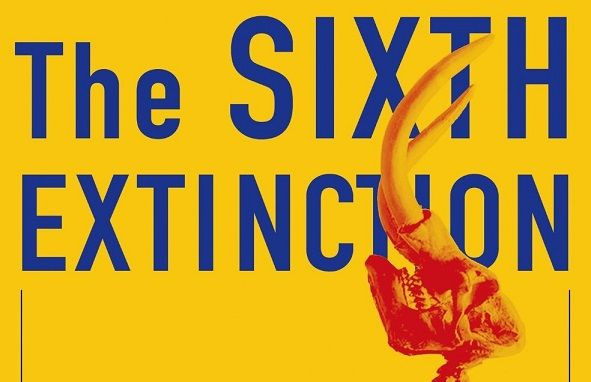'The Sixth Extinction': New Yorker Writer Elizabeth Kolbert Examines The Global Catastrophe Unfolding Before Us

What do asteroids, volcanoes and humans have in common? They're all probably responsible for at least one major extinction event in Earth’s history – including one that’s happening right now.
The story of Earth in the fossil record is one punctuated by calamities. In 1982, University of Chicago paleontologists Jack Sepkoski and David Raup identified five mass extinctions in Earth’s history, from a mass dieoff of sea-dwelling invertebrates 450 million years ago to the end of the reign of dinosaurs 66 million years ago.
For the past couple of decades, as the broad consequences of climate change grow clearer and clearer, many scientists have come to think we are in the middle of a sixth major extinction event. And this one is man-made.
New Yorker staff writer Elizabeth Kolbert ("Field Notes From A Catastrophe") delivers snapshots of the current extinction in progress in her new book, “The Sixth Extinction: An Unnatural History” (it shares the first part of its title, as well as its premise, with a 1995 book by Richard Leakey and Roger Luwin). Kolbert reports from across the globe, delivering snapshots of species on the verge of disappearing, from the bats dying in droves in North American caves to a “frog hotel” in Panama that’s the last refuge for critically endangered amphibians like the Panamanian golden frog. And there are also the people that do the dirty work of trying to preserve the genetic material of disappearing species – the really dirty work.
“Such is the pain the loss of a single species causes that we’re willing to perform ultrasounds on rhinos and handjobs on crows,” Kolbert writes. (Both activities are described in detail in the book).
Science buffs may find some of the topics familiar, but Kolbert’s witty writing weaves the threads of history and science together in fascinating ways, and her on-the-scene reporting from jungles, barren rock islands and zoos adds a vital vigor to dire statistics and research.
Some of the more fascinating chapters in the book are those in which Kolbert walks us through the history of extinction as a concept. People were initially unwilling to accept the idea that a species could totally disappear from the Earth. To preserve the idea of a divinely balanced Nature, many scientists supposed that giant prehistoric fossils belonged to animals hiding out in the wild somewhere. Thomas Jefferson, for example, hoped that the expedition of Lewis and Clark might turn up living examples of the puzzling “American elephant” bones and teeth that had been dug up in New York and Kentucky (later identified as mammoths and mastodons).
“Such is the economy of nature,” Jefferson wrote, “that no instance can be produced of her having permitted any one race of her animals to become extinct; of her having formed any link in her great work so weak as to be broken.”
But when French naturalist Georges Cuvier examined fossil remains from “American elephants” and other beasts, he said they bore no resemblance to living elephants, and had a radical idea: They were what he called “lost species.”
“The thread of operations is broken,” he wrote. “Nature has changed course, and none of the agents she employs today would have been sufficient to produce her former works.”
(Cuvier, interestingly enough, mocked the idea of evolution, or “transformisme,” as it was known in 18th-century Paris. An anatomist by training, he assumed that changes within a species would cripple the individuals and make them unfit.)
It's tempting to think that humanity's unbalanced relationship with nature began with the birth of industrial modern society, but Kolbert offers evidence that we actually have been killing off species ever since we arrived on the world stage. It used to be widely accepted that climate change killed off the big herbivores (megafauna) of the Ice Age, such as the giant ground sloth and the mammoth. But now some scientists think that the culprits might have been our ancestors. One researcher that Kolbert talks to argues, based on his computer models, that even a population of 100 humans could have exterminated the megafauna of North America within a millennium or two.
So, where do we go from here? Kolbert offers little in the way of false hope, but the “Sixth Extinction” doesn’t feel like a grim tome. But its message is dire nonetheless. Ancient man might have hunted the mastodon out of existence, not knowing what he did; 17th-century humans might have cheerfully snuffed out the dodo, confident that nature would never let her creatures disappear completely. We of the 21st century, however, have no such luxury.
"The Sixth Extinction: An Unnatural History" will be available on Feb. 11, 2014.
© Copyright IBTimes 2025. All rights reserved.





















